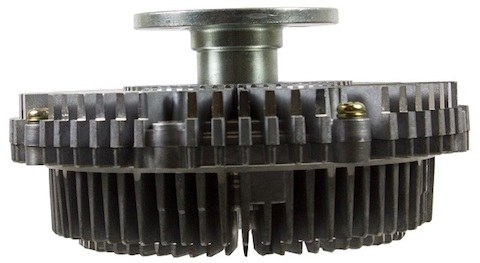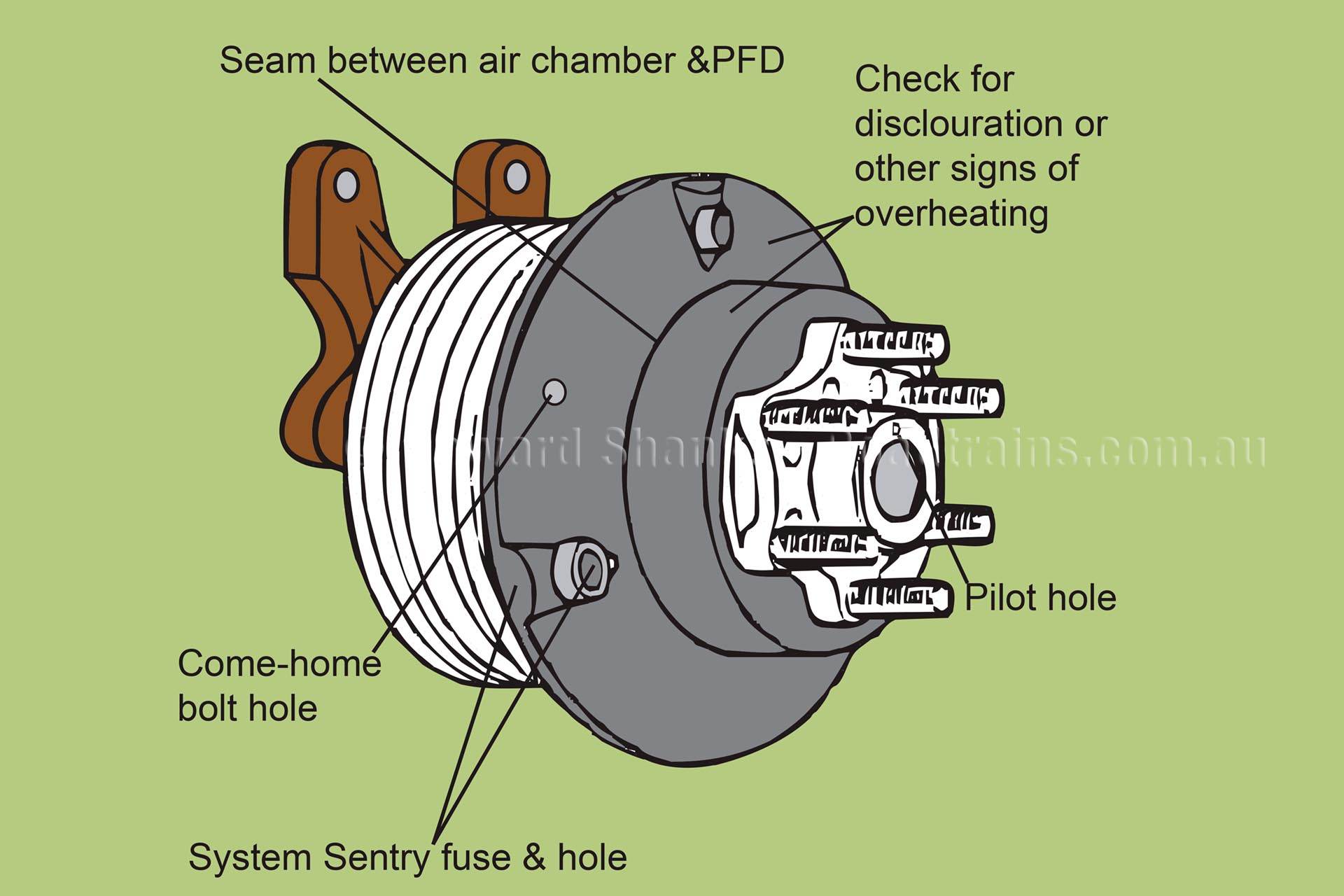Fan Clutch Troubleshooting: Expert Tips to Fix Common Issues
Dealing with fan clutch issues can be frustrating. It’s crucial to diagnose and fix them promptly.
A faulty fan clutch can lead to overheating and engine damage. Understanding fan clutch troubleshooting helps keep your vehicle running smoothly. The fan clutch controls the cooling fan, which regulates engine temperature. If it fails, your engine may overheat, causing serious problems.
Identifying the signs of a bad fan clutch can save you time and money. Common symptoms include engine overheating, loud fan noise, and poor air conditioning performance. Knowing what to look for and how to address these issues ensures your vehicle stays in top shape. This guide will walk you through the basics, helping you diagnose and fix fan clutch problems efficiently.
Introduction To Fan Clutch Troubleshooting
A fan clutch plays a crucial role in your vehicle’s cooling system. It controls the fan’s speed, ensuring your engine stays at the right temperature. Understanding how to troubleshoot a fan clutch can save you time and money. This guide helps you identify and resolve common fan clutch issues.
Importance Of A Functioning Fan Clutch
A well-functioning fan clutch ensures your engine remains cool. It helps prevent overheating, which can cause severe damage. A faulty fan clutch can lead to poor engine performance and increased fuel consumption. Keeping the fan clutch in good condition is essential for maintaining your vehicle’s health.
Common Symptoms Of Fan Clutch Issues
Several signs indicate a potential problem with your fan clutch. One common symptom is overheating. If your engine overheats frequently, the fan clutch might be the culprit. Unusual fan noise is another sign. A fan that is too loud or too quiet can indicate a malfunction.
Poor air conditioning performance can also be a symptom. If your AC isn’t cooling as it should, check the fan clutch. Another symptom is reduced fuel efficiency. A bad fan clutch can cause your vehicle to consume more fuel than usual. Identifying these symptoms early can prevent further damage.

Credit: www.roadtrains.com.au
Identifying Fan Clutch Problems
Understanding fan clutch problems is crucial for vehicle health. The fan clutch controls the cooling fan, preventing engine overheating. If it fails, the engine can overheat, causing severe damage. Recognizing the signs and conducting proper inspections can help you identify issues early.
Signs Of A Bad Fan Clutch
There are several signs that indicate a bad fan clutch. Some of the most common symptoms include:
- Overheating: The engine heats up quickly, especially in traffic.
- Excessive Fan Noise: The fan is louder than usual.
- Poor Air Conditioning: The AC performance drops, especially at idle.
- Engine Performance Issues: The engine struggles or stalls.
Recognizing these signs early can prevent more significant problems.
Visual And Physical Inspections
Conducting regular inspections can help you spot fan clutch issues. Here’s how:
- Check for Leaks: Look for oil or grease near the fan clutch. Leaks indicate a failing clutch.
- Inspect Fan Blades: Look for cracks, bends, or damage to the fan blades. Damaged blades can impact performance.
- Test Fan Movement: With the engine off, spin the fan by hand. It should move freely but with slight resistance.
- Listen for Noises: Start the engine and listen. Grinding or squealing sounds indicate a problem.
Use these steps to regularly inspect your fan clutch and maintain vehicle health.
Tools Needed For Fan Clutch Repair
Repairing a fan clutch can be daunting without the right tools. Having the proper equipment ensures the job is done efficiently and safely. Here’s a guide on the essential tools needed for fan clutch repair.
Basic Tools Required
- Wrenches: A set of open-end wrenches is crucial. They help in removing and tightening bolts.
- Screwdrivers: Both flathead and Phillips screwdrivers are necessary for loosening screws.
- Pliers: Needle-nose and adjustable pliers are useful for gripping and twisting.
- Socket Set: A variety of socket sizes are needed for different bolts.
- Torque Wrench: Ensures bolts are tightened to the correct specification.
Specialty Tools For Advanced Repairs
- Fan Clutch Wrench Set: These wrenches are specifically designed to fit fan clutch bolts.
- Clutch Holding Tool: This tool holds the fan clutch in place while you work.
- Radiator Disconnect Tool: Used for safely disconnecting the radiator from the fan clutch.
- Fan Clutch Removal Tool: Eases the removal of the fan clutch from the engine.
- Belt Tensioner Tool: Adjusts the tension of the belts connected to the fan clutch.
Step-by-step Troubleshooting Guide
Ensuring your fan clutch operates correctly is vital. A malfunctioning fan clutch can lead to engine overheating. This guide will help you identify and fix common fan clutch issues. Follow these steps carefully for optimal results.
Pre-inspection Checklist
Before diving into detailed diagnostics, it’s crucial to perform a pre-inspection. This helps spot any obvious issues. Here’s what you need to check:
- Visual Inspection: Look for leaks, cracks, or other visible damage.
- Noise Check: Listen for unusual noises when the engine is running.
- Temperature Check: Ensure the engine isn’t overheating.
- Fan Movement: Manually spin the fan. It should have some resistance.
Detailed Diagnostic Steps
Once you’ve completed the pre-inspection, proceed with these detailed steps:
- Measure Fan Speed: Use a tachometer to measure the fan speed. Compare it with the manufacturer’s specifications.
- Check for Bearing Play: Gently move the fan up and down. Any play indicates a worn bearing.
- Inspect the Clutch: Remove the fan clutch. Check for fluid leaks or burnt smell.
- Test Thermostat: Use a thermometer to ensure the thermostat opens at the correct temperature.
- Check Electrical Connections: Ensure all electrical connections are secure and free of corrosion.
- Replace if Necessary: If any component fails these tests, consider replacing the fan clutch.
By following these steps, you can effectively diagnose and resolve fan clutch issues. Proper maintenance ensures your engine runs smoothly and avoids costly repairs.
Common Fan Clutch Issues And Solutions
Fan clutches play a crucial role in regulating engine temperature. They engage and disengage the cooling fan, ensuring the engine stays within safe operating temperatures. Over time, fan clutches can develop issues that affect engine performance. Here, we will discuss common fan clutch issues and their solutions.
Overheating Problems
One common issue is engine overheating. This often signals a fan clutch problem. If the fan clutch fails, the fan won’t spin at the right speed. This leads to insufficient cooling.
Check the fan clutch for any signs of wear. Look for oil leaks. These can indicate internal damage. Replace the fan clutch if needed. This simple fix can prevent engine damage.
Unusual Noises
Unusual noises from the engine bay are another sign. A failing fan clutch can produce a grinding or roaring sound. This noise usually increases with engine speed.
Inspect the fan clutch and the fan blades. Ensure they are not loose or damaged. Tighten any loose bolts. Replace damaged parts. This can eliminate the noise and restore proper function.

Credit: gmb.net
When To Replace Your Fan Clutch
Experiencing overheating or unusual noises may indicate a faulty fan clutch. Replace it to prevent engine damage. Regular checks can help identify issues early.
Your vehicle’s fan clutch is essential for cooling the engine. It regulates the fan’s speed based on engine temperature. Knowing when to replace it can save you from engine damage and costly repairs.Signs Replacement Is Necessary
Several signs indicate a failing fan clutch. Watch for these symptoms:- Overheating: If your engine overheats often, the fan clutch might be faulty.
- Loud Noise: A noisy fan clutch when the engine is running can signal trouble.
- Poor Air Conditioning: Inefficient cooling may indicate a failing fan clutch.
- Excessive Fan Speed: If the fan runs at full speed constantly, the clutch may need replacement.
Choosing The Right Replacement
Selecting the correct fan clutch is crucial. Here’s a table to guide you:| Type | Description | Best For |
|---|---|---|
| Thermal Fan Clutch | Uses a bi-metallic sensor to adjust the fan speed. | Vehicles in varying climates. |
| Non-Thermal Fan Clutch | Operates at a constant speed, regardless of temperature. | Older models or specific applications. |
- Compatibility: Ensure the clutch fits your vehicle model.
- Quality: Opt for trusted brands with good reviews.
- Warranty: A warranty can provide peace of mind.
Preventive Maintenance Tips
Preventive maintenance is essential for keeping your fan clutch in top condition. Regular checks and simple maintenance steps can save you from costly repairs. Follow these tips to ensure your fan clutch operates efficiently and lasts longer.
Regular Inspections
Inspect your fan clutch regularly. Look for signs of wear or damage. Check for any wobbling or unusual noises. These can indicate problems. Also, examine the fan blades for cracks or chips. Damaged blades can affect performance and safety.
Pay attention to any fluid leaks around the fan clutch. Leaks can signal a failing seal. Early detection of issues can prevent bigger problems. Always follow the manufacturer’s recommended inspection schedule.
Maintaining Optimal Performance
Ensure your fan clutch operates at its best. Clean the fan blades periodically. Dirt and debris can affect airflow and cooling efficiency. Use a soft brush or cloth to clean the blades. Avoid using harsh chemicals that can damage the material.
Check the tension of the fan belt. A loose or worn belt can reduce performance. Adjust or replace the belt as needed. Refer to the vehicle’s manual for proper tension specifications.
Lubricate any moving parts if necessary. Some fan clutches have lubrication points. Use the recommended lubricant to keep parts moving smoothly. This can help reduce wear and extend the life of your fan clutch.

Credit: www.roadtrains.com.au
Expert Advice And Best Practices
Fan clutch problems can be difficult to identify and fix. With expert advice and best practices, you can manage these issues more effectively. Below are some tips and common mistakes to avoid, straight from automotive experts.
Tips From Automotive Experts
- Regular Inspection: Check the fan clutch regularly for wear and tear.
- Listen for Noises: Unusual noises can indicate a failing fan clutch.
- Check Temperature: Overheating can be a sign of a faulty fan clutch.
- Feel for Resistance: Spin the fan by hand when the engine is off. It should have some resistance.
- Watch for Leaks: Fluid leaks around the fan clutch can signal a problem.
Common Mistakes To Avoid
| Mistake | Consequence |
|---|---|
| Ignoring Noise | Can lead to engine damage |
| Overlooking Leaks | May result in overheating |
| Neglecting Regular Checks | Increases the risk of sudden failure |
| Improper Installation | Causes poor performance |
| Using Low-Quality Parts | Reduces the lifespan of the fan clutch |
By following these tips and avoiding common mistakes, you can ensure your fan clutch operates efficiently and lasts longer. Proper maintenance saves time, money, and keeps your vehicle running smoothly.
Conclusion And Final Thoughts
Troubleshooting a fan clutch can be challenging but rewarding. Understanding the key aspects and knowing how to address common issues can save time and money. Let’s wrap up with some final insights.
Summarizing Key Points
Here are the main takeaways for troubleshooting a fan clutch:
- Identify symptoms: Overheating, unusual noises, or poor cooling performance.
- Visual inspection: Look for leaks, cracks, or wear.
- Test functionality: Check for resistance when the engine is off.
- Replacement: Consider replacing if the fan clutch shows significant wear or damage.
Encouragement For Diy Enthusiasts
Troubleshooting a fan clutch may seem daunting, but it’s achievable. With patience and the right tools, you can diagnose and fix common issues.
DIY repairs save money and help you learn more about your vehicle. Always refer to the vehicle’s manual for specific guidelines.
Remember, safety first. If unsure, seek professional help to avoid further damage.
Frequently Asked Questions
What Are The Signs Of A Bad Fan Clutch?
A bad fan clutch may cause overheating, loud noises, and poor air conditioning.
How Do You Test A Fan Clutch?
Spin the fan by hand. It should feel stiff and not spin freely.
What Happens If A Fan Clutch Fails?
If it fails, the engine may overheat. This can cause severe damage.
Can A Faulty Fan Clutch Affect Ac Performance?
Yes, a faulty fan clutch can reduce airflow, affecting AC performance.
How Much Does It Cost To Replace A Fan Clutch?
Replacing a fan clutch typically costs between $150 and $400, including labor.
Conclusion
Identifying fan clutch issues can save time and money. Regular maintenance is key. Keep an eye on temperature and noise levels. A failing fan clutch often shows warning signs. Address problems early to avoid bigger repairs. Understanding these basics helps maintain your vehicle’s health.
Remember, a well-functioning fan clutch ensures optimal engine performance. Stay proactive and keep your car running smoothly. Happy driving!






